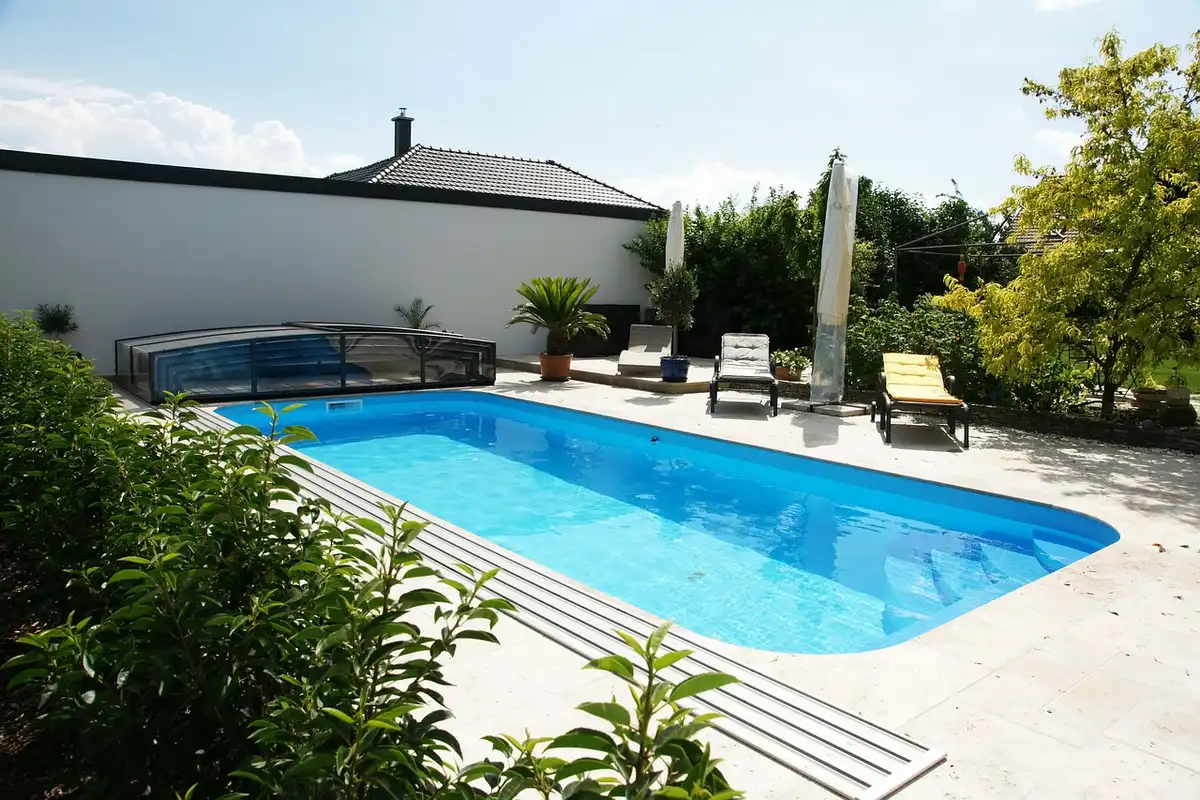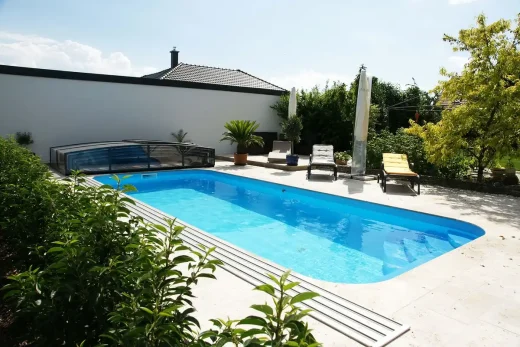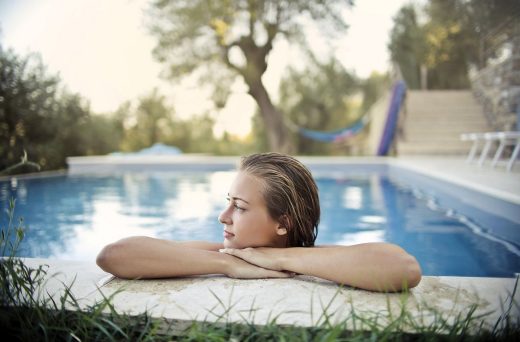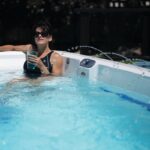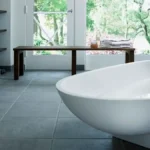What do you need to swim in a pool, Swimming property, Home contractors
What Do You Need to Swim in a Pool?
5 March 2025
Swimming in a pool involves more than just diving in—whether you’re a casual swimmer, a fitness enthusiast, or a pool owner, the right combination of personal gear and pool equipment ensures safety, hygiene, and enjoyment. In Australia, where climate conditions range from tropical humidity to arid heat, tailoring your approach to pool preparation is essential. This guide covers everything from the basics of personal swim essentials to the technical pool equipment which is brought to you by 1 Pool Care.
Personal Essentials for SwimmersSwimwear
A well-fitted swimsuit is the foundation of any pool experience. For frequent swimmers, chlorine-resistant fabrics like polyester or PBT (polybutylene terephthalate) are ideal, as they withstand prolonged exposure to pool chemicals without fading or stretching. Competitive swimmers often opt for hydrodynamic one-piece suits or jammers to reduce drag, while casual swimmers may prefer versatile two-piece options. Avoid loose clothing, as it can impede movement and clog filtration systems.
Goggles
Protecting your eyes from chlorine irritation is crucial, especially in Australia’s outdoor pools with intense UV exposure. Look for goggles with:
- UV-protective lenses (mirrored or tinted for outdoor use).
- Anti-fog coatings to maintain visibility during laps.
- Adjustable silicone seals for a snug fit without pressure points.
Swim Caps
Most Australian pools require swim caps to minimise hair clogging filters. Silicone caps offer durability and a watertight seal, while latex is a budget-friendly alternative. For thick or long hair, textured caps with extra stretch prevent slippage.
Towels and Hygiene Products
- Quick-drying microfiber towels: Lightweight and compact, these reduce post-swim clutter. Bright colours help distinguish your towel in communal areas.
- Chlorine-neutralising shampoo and conditioner: Combat dry, brittle hair caused by frequent exposure to pool chemicals.
- Sunscreen: Water-resistant SPF 50+ is non-negotiable for outdoor pools. Reapply every two hours on exposed skin.
Footwear
Rubber sandals or flip-flops protect against hot pavement and fungal infections. Opt for non-slip soles to avoid accidents near wet surfaces.
Pool Equipment for Safety and MaintenanceMandatory Safety Features (Australian Standards)
- Pool Fencing
- Height: Minimum 1.2 metres, with no gaps wider than 10 cm between vertical bars.
- Self-closing gates: Must latch automatically without manual intervention.
- Non-climbable zones (NCZ): A 90 cm perimeter around the fence must remain clear of climbable objects.
CPR Signage
Weather-resistant CPR charts must be displayed within 3 metres of the pool, detailing emergency procedures.
Rescue Equipment
- Telescopic reaching pole (3–5 metres) with a hook.
- Lifebuoy attached to 12–15 metres of rope.
Cleaning Tools
- Skimmers
- Manual nets: Remove leaves and insects before they sink.
- Automatic skimmers: Integrated into the filtration system for continuous debris removal.
Brushes
- Stiff bristles: For scrubbing algae off concrete or tiled surfaces.
- Soft bristles: Gentle on fibreglass or vinyl liners.
Vacuum Systems
- Robotic cleaners: Self-propelled units like the Zodiac MX8 navigate pool floors independently.
- Suction-side vacuums: Attach to the skimmer for manual debris collection.
Filtration and Circulation
- Pumps
- Variable-speed pumps: Adjust flow rates to save energy (up to 80% compared to single-speed models).
- Energy ratings: Look for pumps with a 10-star WELS rating for efficiency.
Filters
- Sand filters: Capture particles as small as 20 microns; backwash weekly.
- Cartridge filters: Ideal for fine dust in arid regions; clean monthly.
- Diatomaceous Earth (DE) filters: Remove particles down to 5 microns but require regular DE replenishment.
Sanitisers
- Saltwater chlorinators: Convert salt into chlorine (3,000–6,000 ppm) for gentler water.
- UV sterilisers: Neutralise bacteria without chemical residues.
Water Chemistry Management
- Testing Kits
- Digital testers: Provide precise readings for pH, chlorine, alkalinity, and calcium hardness.
- Test strips: Offer quick results for routine checks.
Chemicals
- pH adjusters: Sodium carbonate (to raise pH) or dry acid (to lower pH).
- Algaecides: Polymeric formulas prevent green algae; copper-based treatments tackle black algae.
Climate-Specific AdjustmentsTropical Regions (QLD, NT)
- Priority: Combat humidity-driven algae with frequent brushing and algaecides.
- Equipment: Cartridge filters handle fine dust; solar covers reduce evaporation.
Temperate Zones (NSW, VIC, WA)
- Priority: Balance energy efficiency with seasonal temperature swings.
- Equipment: Heat pumps maintain water warmth; robotic cleaners manage autumn leaf fall.
Arid Zones (SA, Outback)
- Priority: Minimise dust infiltration and water loss.
- Equipment: Pre-filters trap sand; automatic covers shield against windblown debris.
Cooler Climates (TAS, SA Highlands)
- Priority: Prevent freezing and extend swimming seasons.
- Equipment: Gas heaters for rapid heating; winterising kits with antifreeze.
Enhancing the Swim ExperiencePerformance Gear
- Training Aids
- Kickboards: Isolate leg workouts; ergonomic designs reduce shoulder strain.
- Pull buoys: Float hips to focus on upper-body strength.
- Fins: Short blades refine technique; long blades build power.
Waterproof Tech
- Smartwatches: Track laps, heart rate, and stroke efficiency (e.g., Garmin Swim 2).
- Bone-conduction headphones: Stream music without blocking ambient noise.
Safety and Comfort
- Non-Slip Surfaces
Textured mats on pool decks prevent slips, especially in high-traffic areas. - Shade Solutions
Retractable umbrellas or pergolas protect swimmers from UV radiation during peak sun.
Compliance and Best PracticesRegular Inspections
- Monthly: Check fence latches, gate springs, and CPR signage legibility.
- Annually: Service pumps and heaters to maintain efficiency.
Water Conservation
- Covers: Reduce evaporation by up to 70%, critical in drought-prone areas.
- Rainwater top-ups: Install tanks to offset refill costs during water restrictions.
What do you need to swim in a pool Conclusion
Swimming in an Australian pool demands attention to both personal preparation and technical upkeep. For swimmers, investing in chlorine-resistant swimwear, UV-protective goggles, and quick-drying gear enhances comfort and performance. For pool owners, compliance with safety standards—robust fencing, CPR signage, and rescue tools—is non-negotiable. Pair these with efficient filtration, smart chemical management, and climate-tailored equipment to maintain pristine water year-round.
By blending personal essentials with proactive pool care, you’ll create a safe, inviting oasis that stands up to Australia’s diverse climates. Whether you’re cooling off in a tropical Queensland pool or warming up in a heated Tasmanian retreat, the right gear and equipment ensure every swim is refreshing and worry-free.
Comments on this guide to What do you need to swim in a pool article are welcome.
Swimming Pools
Swimming Pool Design Articles
Swimming Pool Designs
Swimming Pool Building Designs
Important purchases for your new swimming pool
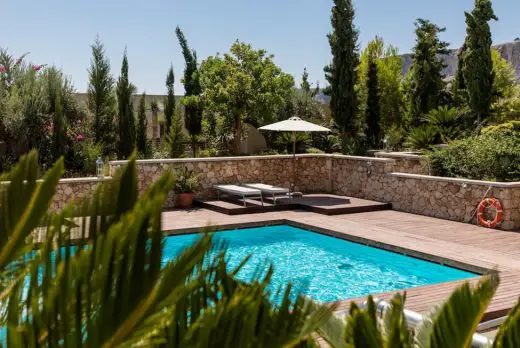
picture : Dim Hou
How to ensure your family swimming pool is child-friendly
Thermal Baths in Bad Ems Building , Germany
Family House Revision & Pool for Art
Property Articles
Comments / photos for the What do you need to swim in a pool page welcome.

